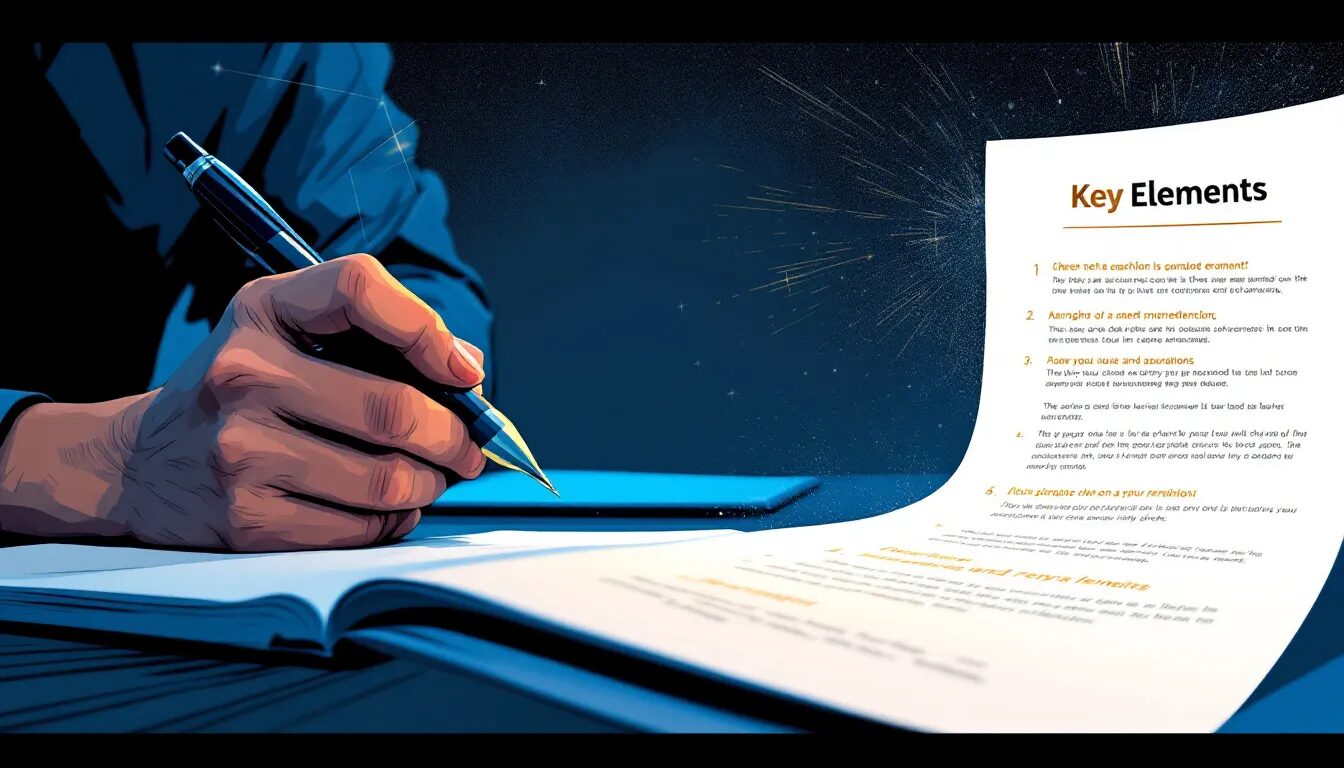Press and release involves creating news articles to share business information with the media. The goal is to gain media coverage and boost your brand’s visibility. In this guide, learn the essential elements and types of press releases and see how they can benefit your company.
Key Takeaways
Press releases are essential tools for businesses to announce significant news and generate earned media coverage, requiring compelling storytelling to resonate with journalists.
There are different types of press releases tailored for various purposes, including product launches, crisis communications, and financial performance, each serving specific audiences.
Effective distribution strategies, alongside SEO optimization and engaging headlines, are critical for maximizing the visibility and impact of press releases.
Understanding Press Releases

Press releases are written communications crafted by companies to disseminate crucial information to selected publishers. They aim primarily at garnering unpaid media exposure for the brand, thereby boosting its visibility and standing in the public eye. In contrast to paid advertising, a press release is expected to weave an engaging narrative that captivates journalists and presents material worthy of news coverage. This positions them as an indispensable instrument for fostering relations between businesses, journalists, and various media platforms.
To announce fresh product launches, public affairs or report significant financial developments, organizations turn to both press releases and media releases. These announcements are designed following a specific format which enables quick review by reporters while integrating an arresting lead-in that draws their interest.
The responsibility of crafting and distributing these statements typically falls on the shoulders of the public relations team who ensure that each story aligns seamlessly with corporate objectives and reputation management strategies. To secure extensive exposure among preoccupied members of the press may require circulating a release multiple times over through strategic pitching efforts.
How Press Releases Work
Public relations teams often compose press releases to disseminate important news to media channels. These releases are designed with specific themes in mind, such as investor updates or corporate announcements, to make the information relevant for its targeted readership. After their creation, these press releases are distributed through newswire services like PR Newswire, which connects with over 440,000 journalists and newsrooms worldwide. This expansive network amplifies reach and assures that pertinent media entities receive the release.
A considerable number of journalists—74% according to survey data—favor using press releases when seeking out stories for coverage. Given this preference among reporters and editors, a well-executed release can significantly boost visits to a company’s website or physical premises by capturing media interest.
In essence, press releases serve as an essential conduit between corporations and the journalistic community. They play a critical role in ensuring that significant company developments gain wide exposure across varied audiences through diverse media platforms.
Key Elements of a Good Press Release

To produce an effective press release, one must focus on several crucial aspects.
Ensure the content is engaging, succinct, and clear.
Craft a compelling subject line to grab attention while providing a coherent structure throughout.
Arrange the main body in a logical format that delivers detailed and captivating information across multiple paragraphs.
Append a section at the end known as “boilerplate” containing essential company background and its objectives for context and legitimacy.
Positioning an explicit call to action towards the conclusion of your press release motivates readers to take Interest in your material by visiting a website, signing up for an event or reaching out directly for more details about your company. It’s also vital to provide media contact options for journalists looking for additional insights or wishing to pursue coverage of your news story.
Incorporating quotes from key personnel within the organization along with eye-catching images can considerably strengthen any press release. Engaging headlines combined with meaningful quotations and multimedia assets are pivotal in capturing media interest which ultimately enriches reader engagement with your release thereby successfully disseminating your significant news announcement.
Different Types of Press Releases

Press releases can be customized for a variety of subjects, each with its own specific function. For instance, a press release announcing a new product should have a headline that distinctly presents the item and highlights its primary advantage. It needs to include an elaborate description, include quotes and statistics, as well as offer links for additional information. Such press releases are instrumental in stirring excitement and raising awareness about fresh products.
When it comes to reporting on upcoming events orchestrated by the company, event press releases come into play. They must contain essential details such as when and where the event will take place, along with identifying who would gain from participating.
In contrast to these examples, the earnings release discloses financial results of a firm—vital in cultivating confidence among investors and preserving trustworthiness. These statements are especially significant for publicly listed entities since they maintain transparency and keep all parties engaged.
Amidst adversity or controversies stands another type: crisis communication press releases deliver prompt verifiable updates aimed at addressing emerging issues efficiently. The issuance of this kind of news is pivotal in upholding public faith while steering through reputational hazards during turbulent periods.
Knowing how various types of press releases work ensures you can customize your messaging strategy effectively when disseminating diverse sorts of crucial news.
Press Release vs. News Release
Though they are often thought to be the same, press releases and news releases serve distinct roles. A press release primarily aims to disseminate information that will catch the attention of media outlets and secure coverage in various forms of media. On the other hand, a news release is crafted with the intent to convey specific details directly to members of the media. Press releases cater particularly to those who work within journalism—such as reporters, bloggers, editors at news organizations—and provide them with accurate content deemed worthy of broadcasting or publishing.
On a broader scale, news releases appeal not just to professionals in media, but also extend their reach to investors, consumers and people at large—they strive for inclusivity when informing stakeholders through richly detailed documents that present an extensive perspective on what’s being shared. The core goal remains consistent between both types—to inform. Yet it’s clear that each has its own set audience scope and level of detail concerning data distribution.
Appreciating these nuances can be pivotal in successfully utilizing either form for communication purposes. When one tailors messages according to their intended recipients’ needs—with clarity about whether your aim is eliciting interest from journalists or delivering insights broadly—you enhance your chances markedly at conveying your point succinctly regardless of whether you seek concentrated press engagement or wish to engage on larger platforms with diverse audiences.
The Role of Media Alerts and Advisories
Media advisories and alerts are essential for garnering attention from the press and ensuring that important events receive ample media coverage. An advisory is a succinct document aimed at notifying news outlets about an impending event, crafted to quickly engage the attention of busy journalists by providing only crucial information without excessive detail.
In contrast, a media alert acts as a concise call-to-action for members of the news media to report on an event. It provides vital particulars such as when and where the occasion will take place, to providing contact details for any inquiries from the media.
Together, these tools play an invaluable role in boosting attendance by journalists at events, making certain that noteworthy developments gain appropriate exposure through various media platforms.
Press Statements and Their Importance
Press releases are brief, focused communications crafted to respond to particular media stories or events. Their aim is to deliver targeted information, responses, or announcements in a direct and succinct manner. As an illustration of this practice, Volkswagen released a notable press statement after they faced an emissions scandal. The company confronted issues regarding trust with openness and delivered an official pronouncement intended to amend the issue.
In a similar vein, Target issued a crisis-related press release following a data breach. They provided reassurance to their customers by elaborating on the steps taken during the investigation and affirming that payment details remained secure. Fundamentally, such statements play an essential role in upholding public confidence through immediate and forthright communication when crises arise.
These declarations enable control over narratives while effectively conveying the standpoint of companies both publicly and within news outlets. By delivering swift and transparent press statements promptly after incidents occur, firms can skillfully handle their public image whilst preserving their credibility among stakeholders.
Press Conferences: Interactive Engagement
Organizations utilize press conferences to swiftly address and respond to journalists’ questions, promoting an interactive exchange. The direct communication between spokespersons and the media facilitates on-the-spot clarifications and additional queries. Such interactivity is key in enriching media coverage and solidifying relationships with the journalistic community.
Incorporating elements like live chat functions during these events stimulates active participation from reporters, prompting them to pose relevant inquiries. Issuing well-crafted media advisories is pivotal in boosting journalist turnout by providing indispensable information that attracts their interest.
By conducting effective press conferences, organizations can deliver their significant news with clarity and precision, thereby nurturing a favorable connection with members of the press.
Effective Distribution Strategies
Effectively disseminating press releases is essential to guarantee your message gets in front of the intended audience. You can opt for self-managed distribution or utilize online platforms for circulating your press releases. Compiling a personalized list of media contacts is the most budget-friendly approach, offering targeted communication with journalists. It demands considerable time and effort to keep contact information current.
Utilizing digital tools like newswires for releasing your press statements can simplify the process by quickly broadcasting them across a wide network, ensuring they are seen by an array of digital media outlets and relevant journalists—saving you both time and resources.
To achieve optimal outcomes when issuing a press release, employing a combination of hands-on management and leveraging online services enhances its visibility. This strategy ensures that your release gains extensive exposure while reaching audiences who have an explicit interest in the content shared by both traditional media sources and digital channels.
Crafting a Compelling Headline

Crafting an engaging headline is essential for any press release, capturing attention with its appeal and crafted precision to promote clicking. A compelling headline must be succinct yet informative, quickly drawing in readers by summarizing the crux of the news. Recognizing who your target audience is remains key. Headlines need to strike a chord with both journalists and the general public’s interests and necessities. Enriching headlines with pertinent data can bolster their allure, rendering the information more persuasive and likely to be shared.
It may prove beneficial to borrow phrases from successful marketing campaigns when creating a press release, but ensure they are tweaked appropriately for this context. Attention to correct grammar and punctuation in headlines cannot be overstressed as it mirrors your brand’s level of professionalism.
The practice of constructing your headline after fleshing out the body content of your press release can greatly aid in distilling its central theme effectively into a compact statement. Adhering to these guidelines will enable you to develop standout headlines that adeptly broadcast your significant news items.
SEO Optimization for Press Releases
By utilizing SEO optimization in a press release, it can gain heightened online presence through being cataloged on various platforms, and may feature in Google News or prominent snippets. Embedding pertinent keywords within the text of the press release increases its likelihood to ascend within search engine rankings. The production of high-quality backlinks from respected sources fortifies credibility with search engines, thus enhancing SEO standings.
The integration of multimedia components not only boosts interaction with press releases, but also aids in bolstering their SEO value when they are optimized effectively. A well-planned inclusion of hyperlinks within a news release can direct readers towards associated content, which might lead to an increase in brand awareness and potentially elevate organic web traffic.
Concentrating efforts on refining your news releases for SEO assures that these communications captivate audiences while simultaneously securing substantial visibility across the internet landscape.
Case Studies: Successful Press Releases

Examining real-world examples of successful press releases can yield important lessons about their efficacy. Take the example of Timmy Stevens Co., which managed to generate buzz around a brand awareness event by highlighting essential information such as the venue and date in its release, as well as indicating who would find value in attending. This strategy proved effective in garnering excitement and securing media attention, demonstrating how impactful a meticulously composed press release can be.
Press releases have the potential to stir enthusiasm for major events or product launches, leading to widespread media coverage. Delving into case studies of triumphant press releases offers critical understanding of what features make them work so well. By assimilating these findings into your own marketing communications tactics, you stand to enhance your ability to engage with the press successfully.
Benefits and Drawbacks of Press Releases
Press releases play a vital role in securing success within public relations by promoting media coverage and elevating the visibility of brands. A striking 68% of companies acknowledge that their brand recognition has substantially improved following an effective distribution of press releases. By incorporating press releases, organizations can achieve broader exposure, establish credibility, attract favorable media attention, counteract negative publicity, and boost traffic to their websites.
Nevertheless, there is a tendency for press releases to come across as vague or lacking depth because they predominantly showcase positive information and may lack balanced reporting. This can result in them projecting a somewhat skewed viewpoint due to their emphasis on only presenting good news.
Despite their advantages, it’s important not to view press releases as substitutes for an all-encompassing marketing plan. Grasping both the strong points and limitations allows you to judiciously integrate press releases into your overarching communications strategy with more effectiveness.
Summary
To make a notable impression in the current media environment, it’s crucial for any organization to become adept at crafting press releases. This involves getting to grips with their intent and structure, developing attention-grabbing headlines, and ensuring they are search engine optimized. By concentrating on these essential aspects and techniques, you can produce press releases that don’t just attract media interest but also engage your target audience effectively.
Press releases serve as an instrumental resource for increasing brand exposure, steering public relations efforts, and fulfilling communication objectives. Equipped with the insights and instruments outlined in this manual, you’re prepared to author standout press releases that leave a lasting mark. Leverage the influence of a well-crafted release and observe how significantly your media coverage increases.
Frequently Asked Questions
What is the primary purpose of a press release?
The main goal of a press release is to secure media coverage for a brand, thus boosting its visibility and reputation. This is achieved by providing journalists and media outlets with an engaging story through the release.
How do press releases work?
Press releases are created by public relations teams and distributed via newswire services to inform a wide audience, making them a valuable and trusted source of news for journalists.
Their effectiveness lies in their ability to communicate important information clearly and concisely.
What are the key elements of a good press release?
A good press release must have a concise message, a clear call to action, a well-structured body, media contact details, and can benefit from quotes and appealing graphics.
These elements work together to capture attention and communicate your message effectively.
What is the difference between a press release and a news release?
The primary difference is that a press release focuses on securing media coverage for journalists, while a news release communicates information to a broader audience, including investors and the general public.
Understanding this distinction can help tailor your communications effectively.
How can press releases be optimized for SEO?
To optimize press releases for SEO, incorporate relevant keywords, create quality backlinks, and include multimedia elements while strategically linking to relevant pages to boost online visibility.
This approach ensures your press release effectively reaches a wider audience.





